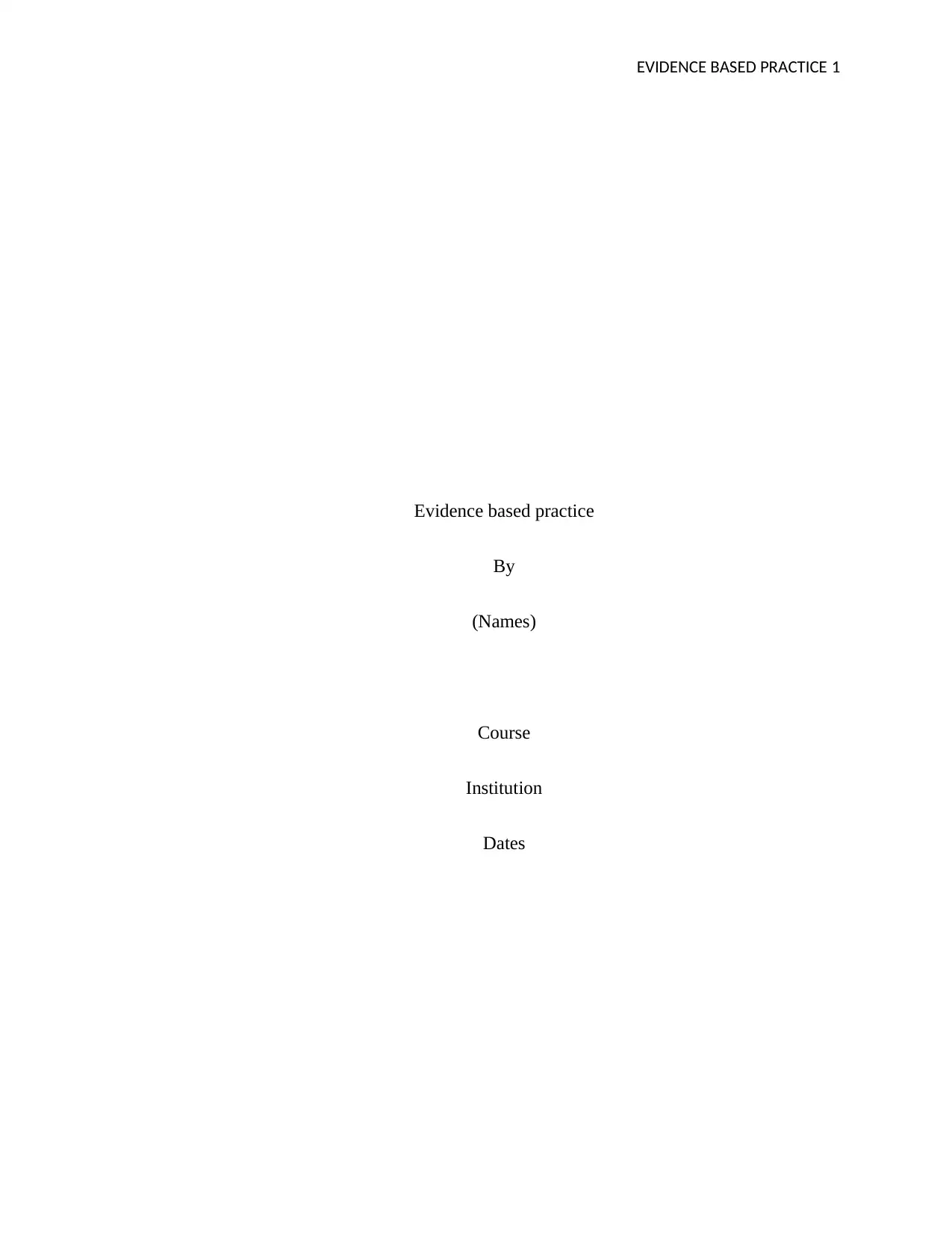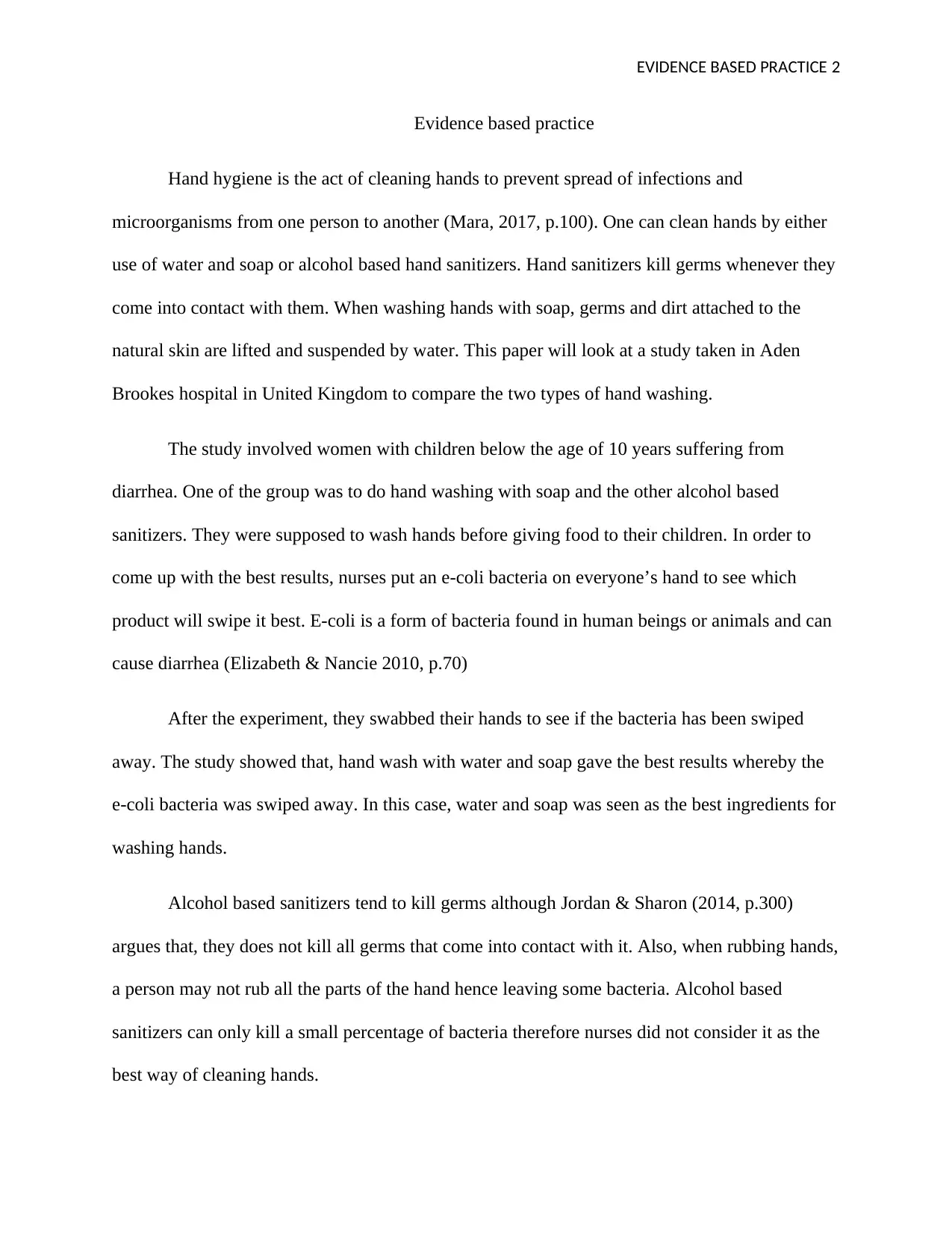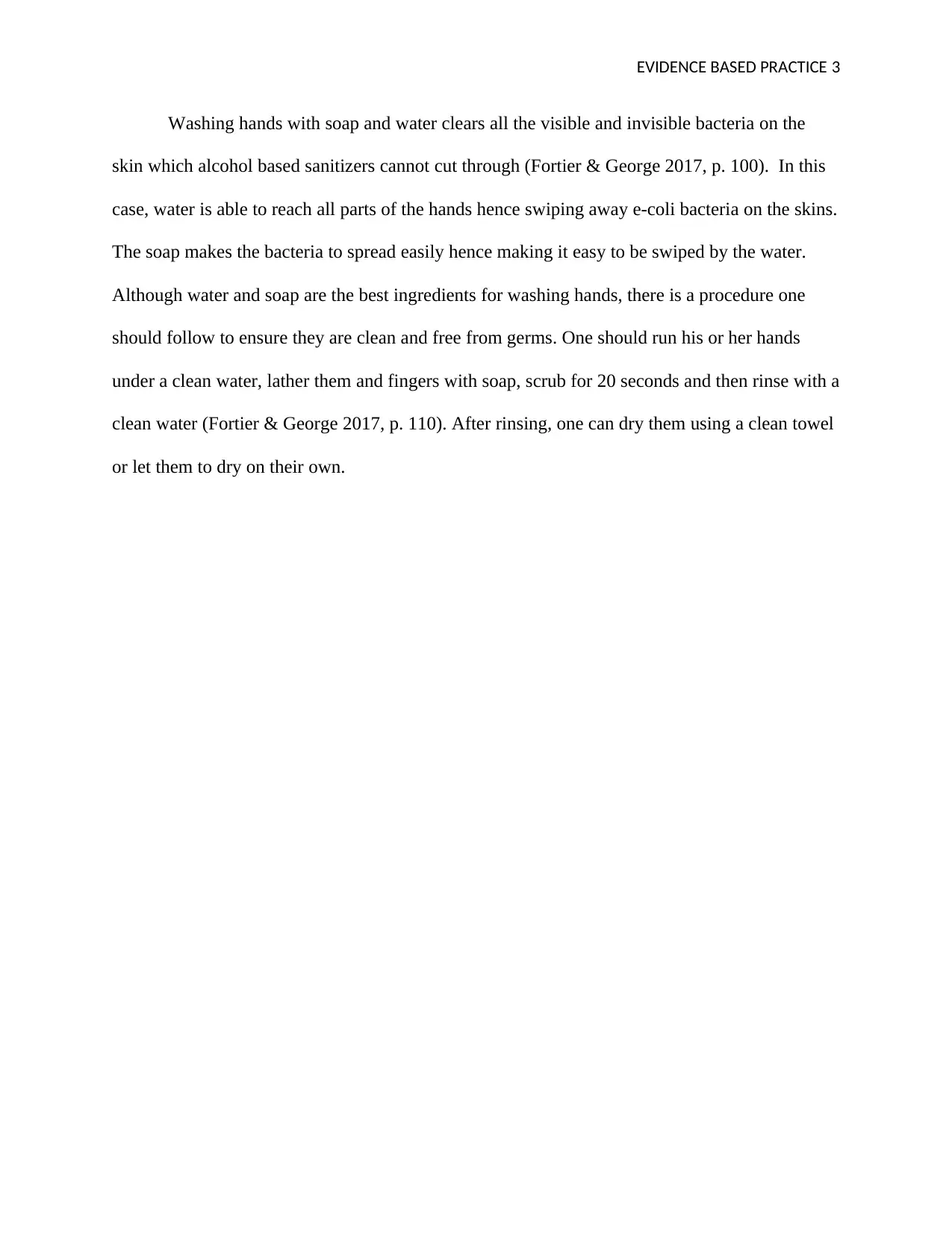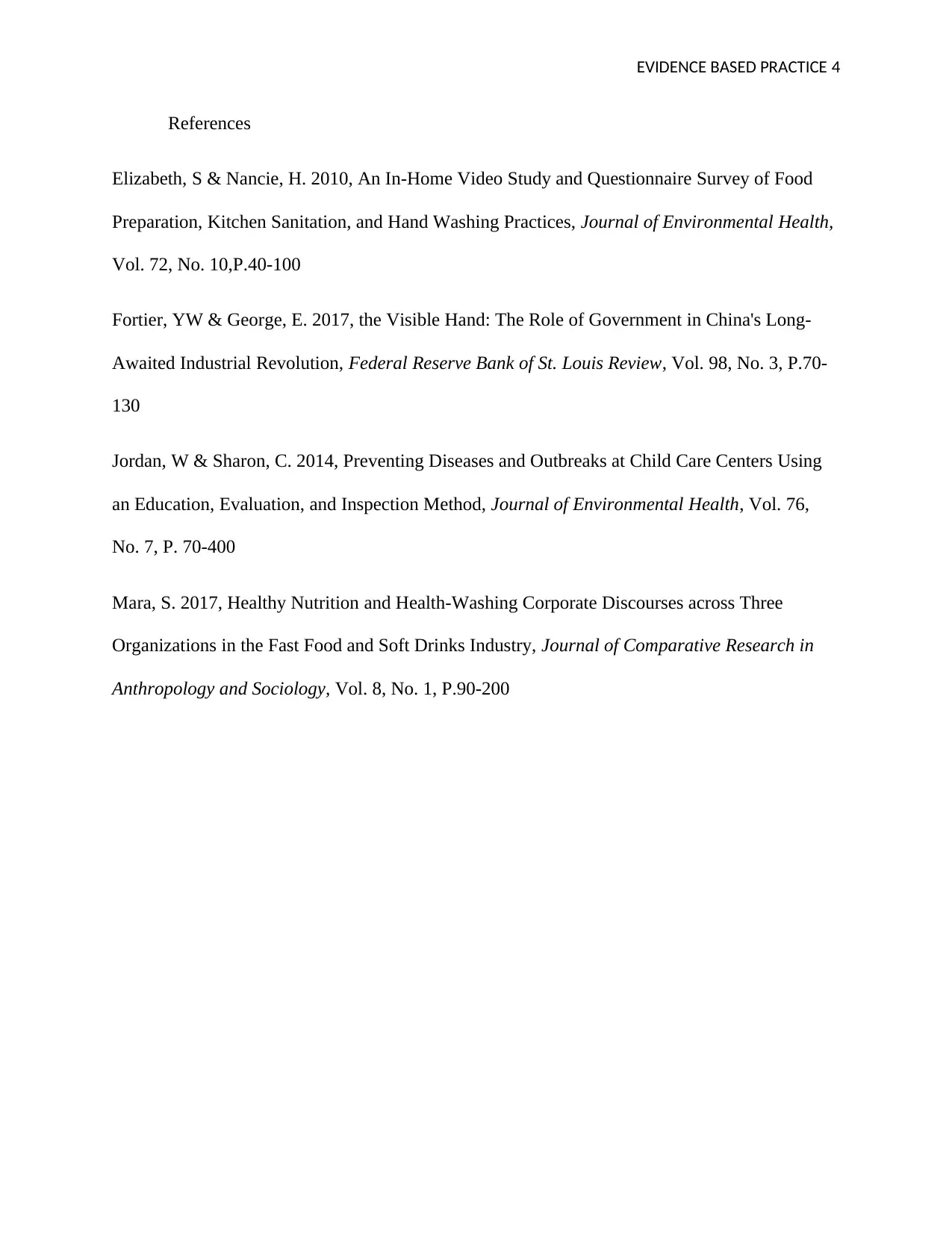Evidence-Based Practice: Hand Washing Methods Comparison Report
VerifiedAdded on 2022/09/30
|4
|688
|368
Report
AI Summary
This report examines the effectiveness of hand washing methods, specifically comparing soap and water to alcohol-based hand sanitizers in a healthcare setting. The assignment is based on a study conducted in a hospital, where participants were exposed to E-coli bacteria and then instructed to wash their hands using either soap and water or alcohol-based sanitizers. The study found that hand washing with soap and water was more effective in removing the bacteria. The report provides a detailed analysis of the study's methodology and results, referencing relevant literature to support the findings. It also discusses the importance of proper hand washing techniques and the limitations of alcohol-based sanitizers in eliminating all types of germs. The conclusion emphasizes the importance of soap and water for effective hand hygiene and the need for adherence to proper hand washing procedures. This report is a valuable resource for understanding the best practices in hand hygiene.
1 out of 4






![[object Object]](/_next/static/media/star-bottom.7253800d.svg)